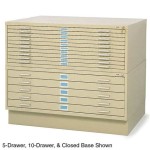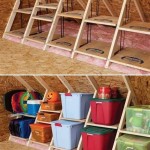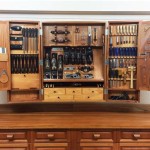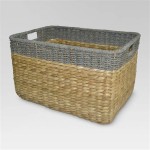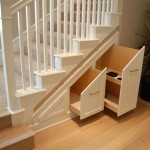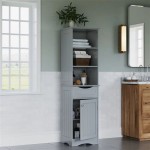DIY Double Bed Frame With Storage: A Comprehensive Guide
Constructing a double bed frame with integrated storage is a rewarding DIY project that combines woodworking skills with practical space-saving design. This endeavor not only yields a cost-effective sleeping solution but also offers the satisfaction of creating a custom piece of furniture tailored to specific needs and aesthetic preferences. This article provides a detailed exposition on the process of building a double bed frame with storage, covering essential considerations from planning and material selection to assembly and finishing.
Planning and Design Considerations
The initial phase of any DIY project involves meticulous planning. For a double bed frame with storage, this includes determining the dimensions, storage configuration, and overall design. The standard dimensions for a double mattress are 54 inches (137 cm) wide and 75 inches (191 cm) long. The bed frame's dimensions should accommodate these measurements with a slight allowance for bedding. The height of the bed frame is another crucial factor, influencing both accessibility and the volume of available storage space.
Storage options can vary significantly. Drawers beneath the bed are a common choice, providing easy access to stored items. Alternatively, lift-up platforms offer access to the entire area under the mattress, suitable for storing larger or less frequently used items. A combination of both drawers and lift-up sections can maximize storage versatility.
The design should also consider the structural integrity of the bed frame. Adequate support is essential to prevent sagging or instability. Reinforcements, such as center supports and sturdy corner joints, are necessary to ensure the bed frame can withstand the weight of the mattress and occupants. The chosen design should be functional, aesthetically pleasing, and structurally sound.
Sketching the design and creating detailed plans with precise measurements is highly recommended. This will serve as a roadmap throughout the construction process, minimizing errors and ensuring a cohesive final product. Furthermore, consider the existing décor of the room and select materials and finishes that complement the overall aesthetic.
Material Selection and Procurement
Choosing the right materials is paramount to the durability and appearance of the DIY double bed frame. Solid wood, plywood, and medium-density fiberboard (MDF) are common choices, each offering distinct advantages and disadvantages.
Solid wood, such as pine, oak, or maple, provides exceptional strength and aesthetic appeal. However, it can be more expensive and may require specialized woodworking skills to work with effectively. Plywood offers a balance of strength, affordability, and ease of use. High-quality plywood is less prone to warping or cracking compared to solid wood, making it a suitable option for many parts of the bed frame. MDF is a cost-effective option that is easy to cut and paint. However, it is less durable than solid wood or plywood and should be used strategically, avoiding areas subject to high stress or moisture.
In addition to the primary wood materials, hardware such as screws, nails, wood glue, and drawer slides are essential. Selecting high-quality hardware will contribute to the longevity and functionality of the bed frame. The type of drawer slides will determine the smoothness and weight capacity of the drawers. Ball-bearing slides offer superior performance compared to friction slides.
Finishing materials, such as stain, paint, varnish, or polyurethane, protect the wood and enhance its appearance. The choice of finish depends on the desired aesthetic and the type of wood used. Consider the environmental impact of the chosen finish by selecting low-VOC (volatile organic compounds) options when possible.
Accurately estimating the quantity of each material is crucial to avoid shortages or excessive waste. Consulting the detailed plans and creating a comprehensive material list will streamline the procurement process. Prior to purchasing, inspect all materials for defects, such as warps, cracks, or knots.
Assembly Process: Step-by-Step Guide
The assembly process involves several steps, each requiring precision and attention to detail. The following outlines a generalized procedure; specific instructions may vary depending on the chosen design.
Frame Construction: Begin by assembling the main frame of the bed. This typically involves joining the side rails, headboard, and footboard. Ensure accurate alignment and secure all joints with screws and wood glue. Clamping the pieces together during the gluing process will ensure a stronger bond. Mitre joints or butt joints reinforced with corner brackets can be used for the frame corners.
Support Structure: Install the internal support structure to hold the mattress. This can consist of slats, plywood sheeting, or a combination of both. Slats should be evenly spaced to provide adequate ventilation and prevent sagging. If using plywood, ensure it is thick enough to support the weight of the mattress and occupants. A center support beam running lengthwise down the middle of the frame is recommended for added stability.
Storage Compartments: Construct the storage compartments according to the design. If building drawers, assemble the drawer boxes using dovetail joints or butt joints reinforced with screws and glue. Install the drawer slides on the drawer boxes and the corresponding locations within the bed frame. Ensure the drawers slide smoothly and align properly. For lift-up storage platforms, construct the platform frame and attach hinges to allow it to pivot upwards. Gas struts can be installed to assist with lifting and holding the platform in the open position.
Headboard and Footboard Attachment: Attach the headboard and footboard to the main frame. Ensure they are securely fastened using screws or bolts. Consider adding decorative elements to the headboard and footboard to enhance the aesthetic appeal of the bed frame.
Finishing Touches: Sand all surfaces smooth and remove any sharp edges or splinters. Apply the chosen finish according to the manufacturer's instructions. Multiple coats may be necessary to achieve the desired level of protection and aesthetic appeal. Allow the finish to dry completely before assembling the bed frame.
Essential Tools and Safety Precautions
Having the right tools is crucial for a successful DIY project. Essential tools for building a double bed frame with storage include:
- Measuring tape
- Pencil
- Square
- Circular saw or table saw
- Jigsaw
- Drill/driver
- Sander
- Clamps
- Safety glasses
- Dust mask
- Ear protection
Safety should be a top priority throughout the construction process. Always wear safety glasses to protect the eyes from flying debris. Use a dust mask to avoid inhaling sawdust. Wear ear protection when operating power tools. Familiarize yourself with the safe operating procedures for each tool before use. Work in a well-ventilated area to avoid inhaling fumes from finishes. Use clamps to secure workpieces when cutting or drilling. When lifting heavy materials, use proper lifting techniques to avoid injury.
Ensuring Structural Integrity and Longevity
The long-term durability and stability of the bed frame are contingent upon several factors, including the quality of materials, the precision of construction, and the maintenance practices employed. Selecting high-grade wood and hardware is a fundamental step in ensuring structural integrity. During assembly, meticulously aligning joints and securing them with both screws and wood glue will create robust connections that can withstand significant stress.
Adequate support is a critical aspect of the bed frame's design. Center support beams and strategically placed slats or a solid platform will prevent sagging and distribute weight evenly across the frame. The choice between slats and a solid platform depends on personal preference and the type of mattress used. Slats promote airflow and can be more comfortable for some individuals, while a solid platform provides a firm and stable surface.
Environmental factors can also influence the longevity of the bed frame. Excessive humidity can lead to warping or swelling of the wood, while extreme dryness can cause cracking. Maintaining a stable indoor climate will help preserve the integrity of the wood. Regularly inspecting the bed frame for loose screws, cracks, or other signs of damage will allow for timely repairs and prevent more significant problems from developing.
Applying a protective finish, such as varnish or polyurethane, will shield the wood from moisture, scratches, and stains. The type of finish should be appropriate for the type of wood and the intended use of the bed frame. Periodically reapplying the finish will maintain its protective properties and enhance the appearance of the wood.
The weight capacity of the bed frame should be carefully considered. Overloading the bed frame can lead to structural failure and potential injury. Distributing weight evenly across the mattress will minimize stress on specific areas of the frame. Avoid placing excessive weight on the edges of the bed frame, as this can weaken the joints.
:strip_icc()/102063020-3aad3b4b93404e84ae239f728901cc61.jpg?strip=all)
How To Build A Platform Style Diy Bed Frame With Storage

How To Build A Platform Bed With Storage Woodworking
:strip_icc()/platformbed1-d99deea62f574ef8b20c38e372ffcf3e.jpg?strip=all)
How To Build A Platform Style Diy Bed Frame With Storage

How To Make A Basic Plywood Bed Frame

Cooles Bett

How To Build A Queen Size Storage Bed Addicted 2 Diy

How To Make A Bed With Storage Underneath Crafted Beds Ltd

How To Build An Easy Diy Platform Bed With Or Without Storage

How To Build A Storage Bed This Old House

Storage Platform Bed Oh Yes
Related Posts

